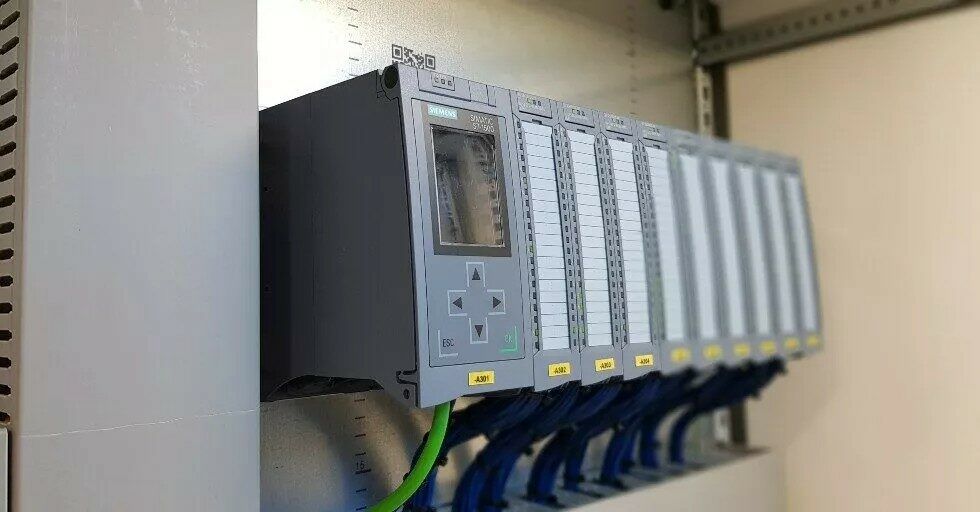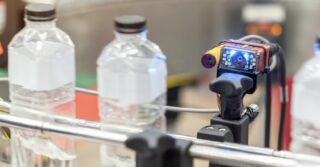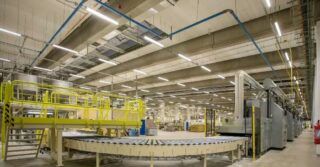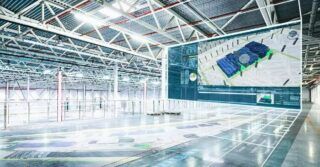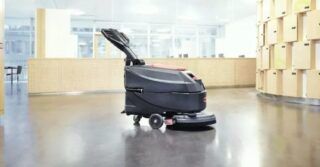Siemens is one of the world’s largest companies. With over 170 years of history and experience, Siemens is an innovator in many areas of industry. Programmable Logic Controllers (PLCs), known under the name SIMATIC, are an important part of its extensive product portfolio.
The history of the SIMATIC PLC
The SIMATIC trademark was registered with the German Patent Office in 1958. The following year, 1959, the SIMATIC G, the world’s first modular controller based on germanium semiconductors using RTL (Resistor-Transistor Logic) technology, was unveiled at the Paris Machine Tool Show. This new technology is significantly faster than previous relay controllers and requires less installation space.
The second generation, called SIMATIC N, offered faster and more reliable devices thanks to the introduction of silicon as the conductive material instead of germanium, which is more stable. These controllers were mainly used in substations and power plants.
In 1973, the company launched the SIMATIC S3 controller, which introduced microprocessors and integrated circuits to control technology. For the first time, advances in computer science made it possible to program PLC controllers using software.
Six years later, the SIMATIC S5 series was launched. The S5 controllers were programmed using STEP 5, one of the first advanced computer-based PLC programming tools. The STEP 5 engineering software allows fast creation and modification of programs. Initially running on the CP/M and MS-DOS operating systems, it was later made available for the Windows platform. It was a breakthrough in automation because the controllers could control complex processes thanks to this flexible programmability.

SIMATIC S5-95U
In 1994, another groundbreaking step was taken with the introduction of SIMATIC S7. Initially, the S7 series consisted of three main product classes: PLC S7-200, S7-300 and S7-400. Of these three, the S7-300 became the most popular due to its adaptability to almost all applications. Siemens also added the Profibus communication interface, introducing the concept of industrial networking to the controller world.
In 1996, the company introduced the TIA concept. This marked the beginning of the development of solutions for the automation of the entire production chain. The result was the TIA Portal platform. A few years later, two more S7 product lines were introduced, PLC S7-1200 (2009) and PLC S7-1500 (2012). Both models continued to push the boundaries of performance while providing more cost effective solutions.
The following is a brief overview of the three leading SIMATIC PLC models: S7-300, S7-1200 and S7-1500.
SIMATIC S7-300 PLC controller
The SIMATIC S7-300 PLC controller has become the most popular among the first S7 product series. Its success helped Siemens establish itself as a leader in the industrial automation industry. The S7-300 is a mid-range controller with a serial connector, suitable for extensive and complex process control tasks. The controller is designed for the automation of machines, entire production lines, and technological facilities.
The controller allows for the construction of both autonomous and network-based, distributed control systems. PROFIBUS and Ethernet/PROFINET communication interfaces enable the connection of controllers into a coherent and integrated production control system.
Programming of these controllers is done using the STEP 7 or STEP 7 Lite tool package.
Compared to the S7-400, the S7-300 processor is less powerful, supports less memory, and has fewer inputs/outputs. However, the S7-300 is more cost-effective. S7-300 provided a better balance of computational power and cost, which made it immensely popular in the industrial automation implementation market.
Siemens offers various versions of the S7-300 processor, which can be divided into four main categories: standard, compact, fail-safe, and technology.
- Standard processors: are intended for small and medium-sized facilities with various requirements regarding the scope and network needs.
- Compact processors: cover the same range as standard processors but are better suited to environments where saving space and cost are key purchasing factors.
- Fail-Safe processors: integrate control in accordance with safety standards, for applications that need to be fail-safe.
- Technology processors: are specially equipped and used for advanced motion control in electric drives or for controlling safety systems.
The S7-300 PLC controller was a significant point in automation for nearly three decades. As announced in an official statement by Siemens, the company is in the phase of withdrawing the SIMATIC S7-300/ET200M product from its commercial offer.
In accordance with the corporate procedures in force, the listed products will continue to be available in the sales process as new devices until October 1, 2025. Spare parts will be available until October 1, 2033. In the meantime, the existing installed base can be migrated to the more modern PLC S7-1200 and S7-1500 series controllers.
Find out more about the controllers at the link:
https://cache.industry.siemens.com/dl/files/415/15390415/att_41918/v1/S7-300_IHB_e.pdf
SIMATIC S7-1200 PLC controller
The primary aim of the S7-1200 was to overcome various technical challenges faced by the S7-300, particularly in terms of size reduction and integration of input/output modules. Despite its reduced size, the controller retains the ability for modular expansion. The S7-1200 is a modular and compact controller designed for both simple and more complex, high-precision tasks.
The controller is not considered the official successor to the S7-300. This role is reserved for the S7-1500. The S7-1200 is considered a transitional model, capable of performing most of the functions available in the S7-1500. What distinguishes the S7-1200 from the S7-1500 is mainly the smaller dimensions, the limited number of input/output modules, the smaller memory and the reduced computing power.
The compact dimensions of the SIMATIC S7-1200 and the integration of input/output modules make it an attractive option for control panels mounted directly on machines.
Find out more about the controllers at the link:
https://cache.industry.siemens.com/dl/files/465/36932465/att_106119/v1/s71200_system_manual_en-US_en-US.pdf
SIMATIC S7-1500 PLC controller
The SIMATIC S7-1500 series offers all the flexibility and scalability benefits of the S7-300 series, but is designed with the future of control automation technology in mind. As a result, many case studies related to this series focus on Industry 4.0 and data analytics.
Computing power, performance and code length have been significantly improved in the S7-1500. The two-port PROFINET IO protocol is used as standard in these controllers, which are designed with extensive network scalability in mind.
As technology advances, more projects are using the cloud for complex data manipulation and trend analysis. The S7-1500 is designed for these use cases, with protocols and networking capabilities for edge and cloud computing.
Until recently, the S7-1500 was compared to the S7-300 when choosing a solution for a new automation project. However, with the announcement of the retirement of the S7-300, the S7-1500 has become the primary solution.
Find out more about the controllers at the link:
https://support.industry.siemens.com/cs/attachments/59191792/s71500_et200mp_system_manual_en-US_en-US.pdf


